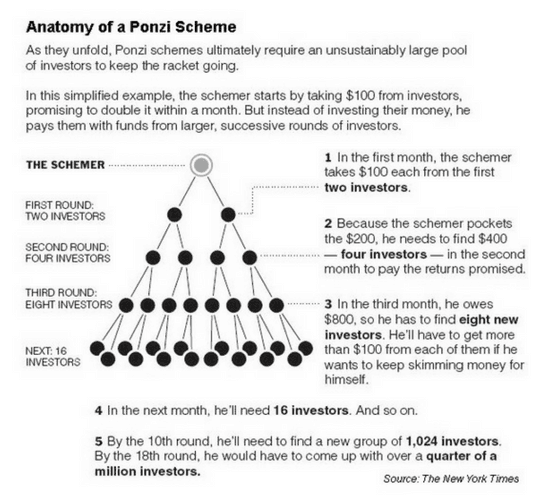
Digital ponzi schemes promise high financial returns by exploiting breaches in the metaverse, cryptocurrency and NFTs.
Organisations that engage in a ponzi scheme focus all of their energy into attracting new customers to make investments.
Due to the lack of regulation in new technologies, fraudulent arrangements are premised on using new investors’ funds to pay the earlier backers.
Criminals are now using the metaverse, cryptocurrency and NFTs to scam investors.
What is a Ponzi Scheme?
A Ponzi scheme is a fraudulent investing scam promising high rates of return with little risk to investors. A Ponzi scheme is a fraudulent investing scam which generates returns for earlier investors with money taken from later investors. This is similar to a pyramid scheme in that both are based on using new investors’ funds to pay the earlier backers.
Ponzi schemes rely on a constant flow of new investments to continue to provide returns to older investors. When this flow runs out, the scheme falls apart.

The term “Ponzi Scheme” was coined after a swindler named Charles Ponzi in 1920. However, the first recorded instances of this sort of investment scam can be traced back to the mid-to-late 1800s, and were orchestrated by Adele Spitzeder in Germany and Sarah Howe in the United States. In fact, the methods of what came to be known as the Ponzi Scheme were described in two separate novels written by Charles Dickens, Martin Chuzzlewit, published in 1844 and Little Dorrit in 1857.
In…







